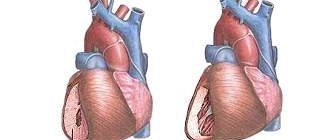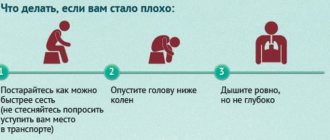1. Diagnosis of high blood pressure
Diagnosis of high blood pressure, or hypertension, involves taking a medical history and directly examining the patient. Your doctor's specific questions and tests will depend on how high your blood pressure is and whether you have other risk factors for heart disease. Some patients may require more detailed diagnostic testing or even a comprehensive cardiac evaluation.
To diagnose hypertension, your doctor may:
- Ask about your family history of hypertension, assess risk factors for high blood pressure - for example, heredity or smoking.
- Measure your blood pressure two or more times. Measurements can be taken on the left or right arm, on the leg and, for example, in different positions - sitting, lying or standing. This will help you get a more accurate idea of your blood pressure.
- Measure your weight, height and waist circumference.
- Check the retina and the condition of the back of the eye.
- Check your heart function (at a minimum, listen to the rhythms).
- Examine the abdomen with a stethoscope. Listening to the vessels in the abdomen will help you hear abnormal sounds, which may be caused by obstruction of blood flow due to a narrowing of the artery in the abdomen.
- Examine the neck to detect an enlarged thyroid gland, distension of the jugular veins and carotid artery.
A must read! Help with treatment and hospitalization!
Hypertension: main symptoms
The patient may not feel the increase in pressure for quite a long time. High blood pressure numbers can be accompanied by unpleasant symptoms. This:
- heaviness in the head or headache (especially in the back of the head);
- spots before the eyes, vision problems;
- dizziness;
- nausea, sometimes vomiting;
- unsteadiness when walking;
- attacks of suffocation, breathing problems;
- severe weakness, malaise;
- increased fatigue with decreased performance.
All these symptoms are not specific, and are possible in many other diseases, so they need to be assessed only in conjunction with blood pressure numbers Source: Arterial hypertension. Zhmurov D.V., Parfenteva M.A., Semenova Yu.V. Colloquium-journal, 2020. p.49-56. With symptomatic hypertension in men or women, there may be symptoms from the organs that suffer the most - swelling, cramps, muscle weakness, snoring, apnea during sleep, fainting, etc.
4. Other examination results for arterial hypertension
During the appointment, the doctor can check whether high blood pressure has caused damage to other organs - blood vessels, heart or eyes. Unusual heart sounds when listening, swollen neck veins (this may indicate heart failure), swelling of the arms and legs, and vascular abnormalities in the back of the eye can indicate various health problems. This means that additional examinations may be necessary.
What should you think about?
The diagnosis of hypertension, or high blood pressure, is usually made based on the average of two or more readings obtained during two or more doctor visits. But in very severe cases, one visit is enough. Self-measurement of blood pressure can also help in diagnosis. Some people are nervous before visiting the doctor, and their blood pressure rises. This means that the picture may not be entirely objective. But if you measure your blood pressure at home and then report the data to your doctor, it can be very helpful in accurately diagnosing hypertension.
Causes of hypertension
The exact cause of the development of hypertension has not yet been determined. Today it has been found that there is a genetic predisposition to the development of pathology Source: Genetic aspects of arterial hypertension. N. A. Ivanova, V. A. Pavlov, N. V. Drozdetskaya. Bulletin of the Smolensk State Medical Academy, 2004. p. 80. The risk is especially high for those people whose close relatives suffer from high blood pressure. In addition, high risk factors for the development of hypertension include:
- overweight and varying degrees of obesity (the higher the body weight, the more likely it is to increase blood pressure);
- sedentary lifestyle, lack of physical activity;
- bad habits (excessive alcohol consumption, smoking);
- excess salt in the diet;
- chronic physical or psycho-emotional stress, sleep deficiency, overwork.
Most often, people in developed countries who work in offices and have a shift schedule suffer from hypertension. Therefore, if there are signs of hypertension, you must first of all adjust your lifestyle (activity, nutrition, habits).
A symptomatic increase in pressure is possible with pathologies of internal organs, endocrine and metabolic diseases.
High blood pressure often accompanies diseases of the kidneys or their vessels - pyelonephritis, glomerulonephritis, polycystic lesions, renal artery stenosis, diabetic nephropathy. Hypertension occurs with tumors of the pituitary gland, adrenal glands (pheochromocytoma, etc.), hyperthyroidism, Cushing's disease, vascular lesions (coarctation of the aorta), preeclampsia, etc. Hypertension is typical for sleep apnea syndrome, taking certain medications (corticosteroids, oral contraceptives, some NSAIDs ).
Dehydroepiandrosterone
Dehydroepiandrosterone (DHEA) is a precursor hormone to testosterone and estradiol. It is produced from cholesterol in the outer layer of the adrenal glands and circulates in the blood, attaching to sulfur in the form of dehydroepiandrosterone sulfate to prevent the breakdown of the hormone.
In women, dehydroepiandrosterone is an important source of estrogens in the body: it provides about 75% of estrogens before menopause and 100% of estrogens in the body after menopause.
Recent scientific research shows that DHEA improves insulin sensitivity, cellular immunity, bone metabolism, sexual function, physical strength, neuroprotection, cognitive function and memory. Normal hormone secretion also means a young, healthy, attractive appearance of a man and woman, their sexual attractiveness and activity.
With age, the level of the hormone decreases - this is taken into account in the study.
Reasons for changes in dehydroepiandrosterone levels:
- benign and malignant tumors of the adrenal glands;
- adrenal hyperplasia;
- pituitary tumors;
- polycystic and other ovarian pathologies.
Consequences, symptoms of elevated levels of dehydroepiandrosterone:
- absence of menstruation;
- male pattern hair growth in women;
- lots of pimples;
- hair loss;
- problems with conceiving and bearing children;
- in men - baldness;
- in women - abnormally small breasts, enlarged Adam's apple;
- in children - early sexual development, including extremely early appearance of secondary sexual characteristics (hair) in the pubic area and under the arms.
Consequences, symptoms of low levels of dehydroepiandrosterone:
- diabetes;
- dementia;
- low sexual desire or its complete absence;
- osteoporosis, weakened bones;
- lupus;
- chronic fatigue syndrome;
- pathological decrease in immunity.
How to submit biomaterial and prepare for research
Venous blood is donated for testing. 2 hours before blood sampling, do not smoke or eat; if necessary, you can drink clean water without gas.
In 2 days - after consultation with a doctor! - do not take steroid or thyroid hormones; if possible, avoid physical and psycho-emotional stress.
Arterial hypertension in diseases of the adrenal cortex
In modern society, there is a significant prevalence of arterial hypertension (AH), amounting to 30–45% among the adult population according to foreign studies and about 40% according to Russian studies [1]. Secondary (symptomatic) hypertension is a disease in which the cause of increased blood pressure (BP) is damage to various organs or systems, and hypertension is only one of the symptoms of the disease. Secondary hypertension is detected in 5–25% of patients with hypertension [1]. Timely diagnosis of symptomatic hypertension makes it possible to select pathogenetic approaches to treatment and, in some cases, completely normalize blood pressure. Hyperfunction of the adrenal cortex against the background of various clinical and morphological forms of diseases of different etiologies is of great importance in the pathogenesis of endocrine forms of hypertension. In most cases, severe hypertension develops, often resistant to antihypertensive therapy.
Primary hyperaldosteronism (PHA) is one of the most common causes of endocrine hypertension, leading to uncomplicated hypertension in 5–10% of cases and persistent hypertension in 7–20% of cases [2]. The prevalence of PHA is the same among men and women, the average age of onset of the disease is 40–50 years. PHA is characterized by autonomous secretion of aldosterone by the adrenal glands, which is relatively independent of the influences of the renin-angiotensin system. Secretion of aldosterone is carried out by the zona glomerulosa of the adrenal cortex and is controlled by the renin-angiotensin system, potassium ions, adrenocorticotropic hormone (ACTH), atrial natriuretic hormone and dopamine. Normally, an increase in potassium levels in the blood causes increased secretion of aldosterone, which in turn increases potassium excretion. When potassium levels are low, aldosterone secretion is inhibited and potassium excretion is reduced. Aldosterone is known to increase blood pressure by increasing sodium retention in the kidneys. Recent studies have shown the effects of aldosterone on the central nervous system by increasing sympathetic vasoconstrictor activity on the peripheral circulation. Aldosterone has a direct effect on the cells of the vascular wall, leading to vasoconstriction and hypertension. Patients with PHA have a higher cardiovascular risk than those with essential hypertension.
Among the causes of PHA are adrenal adenoma, unilateral or bilateral adrenal hyperplasia, in rare cases - familial hyperaldosteronism type I, corrected by glucocorticosteroids (a familial disease caused by deficiency of the 18-hydroxylase gene), type II (familial occurrence of adenoma or hyperplasia) and type III ( mutation of K channels) [3]. The most common form of PHA is idiopathic bilateral hyperplasia (IHA), which is found in 60–70% of patients. Aldosterone-producing adenoma (APA) accounts for 30–35% of patients, less than 1% - adrenal carcinoma or familial forms [2, 4]. According to various researchers, the incidence of IHA has increased significantly compared to other causes of hyperaldosteronism. According to a screening study on the prevalence of IHA and APA in 1125 patients, the prevalence of HA disease caused by both APA and IHA increased significantly (from 7.2% to 19.5%, respectively) with increasing severity of hypertension [4, 8] .
The main symptom of primary hyperaldosteronism is persistent arterial hypertension. The clinical picture of PHA is caused by hypokalemia (plasma potassium is less than 3.6–3.8 mmol/l), the characteristic clinical manifestations of which are severe muscle weakness, paresthesia, convulsions, and nocturia. Hypokalemia leads to impaired glucose tolerance as a result of decreased insulin levels in the blood. However, the absence of hypokalemia does not exclude the presence of PHA [5]. In some patients, the course of the disease may be asymptomatic. Similar clinical manifestations are observed in the familial form of hyperaldosteronism type I. In a large prospective observational study, it was found that about 50% of patients with aldosterone-producing adenoma and 80% with idiopathic hyperplasia had normal plasma potassium levels. Primary hyperaldosteronism in the elderly most often has to be differentiated from hypertension, tetany, diabetes insipidus, potassium-losing nephritis, renal hypertension due to renal ischemia, and secondary hyperaldosteronism. Familial hyperaldosteronism type I is inherited as an autosomal dominant heterogeneous disease and accounts for 0.5–1% of all cases of patients with hypertension, 5% of all forms of PHA, and occurs in both men and women. Typically, patients suffer from severe hypertension with high disability and mortality at a young age as a result of hemorrhagic strokes. Screening should be performed in patients under 20 years of age with hypertension or with a family history of hypertension and hemorrhagic stroke before the age of 40 years [6]. In this form, there is overproduction of 18-hydroxycortisol (18OHF) and 18-oxocortisol (18oxoF). In most cases, bilateral adrenal hyperplasia is detected. Familial hyperaldosteronism type II, which occurs in 1.2–6% of patients with PHA, has different clinical manifestations, indistinguishable from IHA and APA, so the diagnosis is based on the appearance of PHA in two or more first-degree family members [7]. Familial hyperaldosteronism type III was first described in 2008 in a father and two daughters with severe hypokalemic juvenile hypertension [8]. Glucocorticoid-independent GA was accompanied by high levels of 18OHF and 18oxoF. Bilateral adrenal hyperplasia was detected in the majority of patients.
According to endocrine society clinical guidelines, screening for PHA is performed in the following patients [9]:
- with moderate or severe hypertension (blood pressure above 160/100 mm Hg);
- with treatment-resistant hypertension, despite the use of three antihypertensive drugs;
- with hypertension and hypokalemia, including those induced by diuretics;
- with hypertension and adrenal incidentaloma (functionally inactive tumor);
- with a family history of hypertension or acute cerebrovascular disorders under 40 years of age;
- having relatives (first degree) with PGA.
Screening tests for PHA include plasma renin activity (PRA) and aldosterone levels. These studies can be performed while taking most antihypertensive drugs, with the exception of mineralocorticoid receptor antagonists or direct renin inhibitors. In patients with low renin levels and high serum aldosterone levels (more than 15 ng/dL), exercise testing is indicated. Adenoma (aldosteroma) and hyperplasia of the adrenal cortex are characterized by low ARP, which usually does not exceed 1 ng/ml/h after the stimulating effect of walking (1-2 hours) or furosemide, and increased secretion of aldosterone. The value of the angiotensin-renin ratio (ARR) depends on the units of measurement, the lower limit of the definition of ARR [10]. The vast majority of researchers use an APC value in the range of 20–40 (aldosterone concentration in ng/dL to APC in ng/ml/h). Patients with high ARS undergo additional stress tests to differentiate between aldosteroma and adrenal hyperplasia, since the treatment tactics for these forms of hypertension are different: patients with aldosteroma are successfully treated surgically, while patients with adrenal hyperplasia are treated with medication. Currently, the most widely used test is with saline solution, less often with fludrocortisone. To visualize damage to the adrenal glands and clarify the location of the tumor, tomographic methods with the introduction of a contrast agent are used. The hormonal activity of the structural changes identified in the adrenal glands can be judged by the results of phlebography of the adrenal glands and separate catheterization of the adrenal veins with determination of the concentration of aldosterone and cortisol in the blood flowing from the right and left adrenal glands. Surgical removal of aldosterone leads to normalization or a significant decrease in blood pressure in 50–70% of patients [11]. Before surgical removal of aldosterone and patients with bilateral adrenal hyperplasia, spironolactone is prescribed; if the hypotensive effect is insufficient, calcium antagonists may be added. Eplerenone is a selective mineralocorticoid receptor antagonist that does not have antiandrogenic or progestogenic properties, which reduces the incidence of side effects. The drug is used abroad to treat patients with PHA; in Russia, indications for the treatment of GA have not yet been registered. The antagonistic activity of eplerenone is 60% of that of spironolactone. Patients with familial form of hyperaldosteronism type I are treated with glucocorticosteroids (dexamethasone), which leads to normalization of blood pressure and RAAS parameters. Treatment is aimed at correcting the underlying disease and eliminating conditions that stimulate increased aldosterone secretion. It is necessary to understand that the success of treatment and prognosis in patients with hyperaldosteronism directly depends on the timeliness of diagnosis, understanding of the advantages and disadvantages of diagnostic tests, the formation of the correct indications for comparative selective blood sampling from the adrenal veins and approaches to further therapy.
Cushing's syndrome (CUS) is a clinical syndrome that develops with increased secretion of glucocorticoids. SIC leads to the development of hypertension in 70–85% of patients over 18 years of age and in 50–78% of patients under 18 years of age with endogenous hypercortisolism [12–15]. There are ACTH-dependent and ACTH-independent endogenous forms of hypercortisolism. ACTH-dependent forms of endogenous hypercortisolism are detected in 85% of cases.
ACTH-dependent endogenous SIC or Itsenko-Cushing's disease (CUS) is a disease caused by a pituitary tumor or hyperplasia of adenohypophysis cells secreting ACTH; disruption of the production of corticoliberin in the hypothalamus. With BIC, the production of ACTH significantly increases, and the secretion of all tropic hormones of the pituitary gland is also disrupted. Increased ACTH secretion leads to stimulation of steroidogenesis in the adrenal cortex and the development of adrenal hyperplasia [16].
The cause of SIC can be an adenoma, carcinoma of the adrenal cortex, or an ectopic tumor with hyperproduction of ACTH. The clinical picture varies from asymptomatic to clinical manifestations of hypercortisolism. Tumors of the adrenal cortex produce not only glucocorticoids, but androgens (precursors), as well as mineralocorticoids and estrogens [17], which determines the clinical picture of the disease.
SIC caused by ectopic ACTH synthesis (ectopic ACTH syndrome) occurs in 15% of cases of endogenous hypercortisolism. Ectopic ACTH syndrome is detected in 50% of cases of malignant small cell lung tumor. This syndrome may be a manifestation of neuroendocrine tumors that are localized in the pancreas (10%), bronchus (10%) or thymus (15%). Distinctive features of ectopic ACTH syndrome are a significant increase in cortisol levels and the absence of abdominal obesity, characteristic of other forms of SIC [17].
ACTH-independent bilateral micronodular adrenal hyperplasia occurs in children and young adults. Micronodular hyperplasia of the adrenal glands is characterized by significant functional activity with autonomous hypersecretion of cortisol. ACTH-independent bilateral macronodular adrenal hyperplasia is rare. The most common cause is the presence of gastrointestinal polypeptide receptors in the adrenal glands. The secretion of this polypeptide by the cells of the gastrointestinal tract increases after eating, which stimulates the secretion of glucocorticoids in the adrenal glands, i.e., food-related hypercortisolism develops. The level of ACTH in the blood in such patients is low [17].
ACTH-independent micro- and macronodular adrenal hyperplasia may be a component of the Carney complex and McCune-Albright syndrome [18].
The main pathogenetic mechanism for the development of hypertension with endogenous hypercortisolism is an increase in the level of glucocorticoids in the blood, as a result of which the production of angiotensinogen in the liver increases [19], the production of prostaglandins decreases due to inhibition of phospholipase A and insulin resistance increases [20, 21], and an increase in sympathetic activity is noted. Excessive levels of glucocorticoids affect the mineralocorticoid receptors of the kidney through hyperactivation of 11β-hydroxysteroid dehydrogenase, an enzyme that catalyzes the conversion of cortisol to cortisone [22], leading to increased sodium concentrations and water retention. There is evidence of a decrease in the activity of vasodepressor mechanisms, especially endothelial nitric oxide [22].
Hypertension is constant in nature with a tendency to a gradual increase in blood pressure levels, regardless of the etiology of the disease. A feature of hypertension in endogenous SIC is the absence of a significant dependence of the blood pressure level on the gender and age of the patient, as well as on the level of circulating cortisol [12, 13].
With prolonged overproduction of glucocorticoids in the myocardium, functional and structural changes develop: pronounced hypertrophy of the left ventricular myocardium, electrolyte-steroid cardiopathy, dilated cardiomyopathy, decreased myocardial contractility.
The clinical picture of SIC is manifested by the main clinical symptoms resulting from hormonal and metabolic changes. Long-term overproduction of corticosteroids leads to the development of dysplastic obesity, trophic changes in the skin, cardiomyopathies, carbohydrate metabolism disorders, secondary immunodeficiency, secondary hypogonadism, systemic osteoporosis, nephrolithiasis with secondary pyelonephritis, encephalopathies, and various emotional and mental disorders.
It is advisable to begin the examination of patients with hypertension with suspected hypersecretion of glucocorticoids by identifying and confirming the presence of hypercortisolemia, determining salivary cortisol and determining the level of free cortisol excretion in daily urine. In the presence of characteristic clinical manifestations of the disease, to identify hypercortisolism, the daily rhythm of ACTH secretion is determined.
The next stage of diagnosis is to differentiate the etiology of the disease using functional tests (conducting an overnight dexamethasone test with 1 mg, dexamethasone tests with 2 and 8 mg) [23].
To establish the localization of the main pathological process at different stages of diagnosis, imaging research methods are used: ultrasound of the adrenal glands, computed tomography (CT) or magnetic resonance imaging (MRI) of the brain and adrenal glands. The most informative methods for topical diagnosis of tumors in endogenous forms of hypercortisolism are, of course, CT and MRI. These methods make it possible to detect diffuse or diffuse nodular enlargement of both adrenal glands, their deformation, and the presence of nodular formations from 0.5 to 2.0 cm in diameter.
Etiological treatment for the considered forms of hypercortisolism involves the use of surgical, radiation and drug methods, the effectiveness of which depends on the accuracy and timeliness of the diagnosis. The main treatment method for BIC is removal of the pituitary adenoma (transsphenoidal adenomectomy); unilateral or bilateral adrenalectomy in combination with radiation therapy is also possible. When a tumor is identified as the source of ectopic ACTH secretion, surgical treatment methods are used, and, if necessary, chemotherapeutic treatment methods. If it is impossible to determine the source of ectopia, in order to eliminate the symptoms of hypercortisolism, bilateral adrenalectomy is performed, followed by long-term hormone therapy [24]. Drug therapy is used as an addition to these main treatment methods. Drugs of all major classes can be used as symptomatic antihypertensive therapy [25, 26]. Since the pathogenesis of hypertension in hypercortisolism is based on hypernatremia and hypervolemia, preference is given to diuretics in combination with spironolactone [25].
Hypertensive forms of congenital adrenal dysfunction (CAD) may be the cause of hypertension. Deficiency of the steroidogenesis enzyme 11β-hydroxylase accounts for about 5% of all cases of CAI. This enzyme catalyzes the conversion of deoxycorticosterone to corticosterone (a precursor to aldosterone) and 11-deoxycortisol to cortisol. Insufficiency of 11β-hydroxylase leads to increased formation of 11-deoxycorticosterone, which has a mineralocorticoid effect, promoting sodium retention in the body and the development of hypertension. Due to cortisol deficiency, there is an increase in ACTH, which leads to stimulation of steroidogenesis, accumulation of intermediate products of steroidogenesis (17-OH-progesterone and androstenedione, increased secretion of androgens), which entails prenatal virilization and pseudohermaphroditism in girls. Boys are characterized by an early onset of puberty. Hypertension, as a rule, does not correlate with the presence and severity of virilization. In this form of CAH, there is no hyperplasia of the juxtaglomerular apparatus of the kidney and the level of renin in the blood plasma is not increased [27, 28].
Laboratory testing reveals increases in serum levels of 11-deoxycortisol and deoxycorticosterone using high-performance liquid chromatography (HPLC).
Therapy with glucocorticoid hormones leads to normalization of ACTH, deoxycorticosterone and androgens, which is clinically manifested by normalization of blood pressure.
Biglieri syndrome is a rare form of CAH characterized by a deficiency of the steroidogenesis enzymes 17α-hydroxylase and 17,20-lyase. Deficiency of 17α-hydroxylase and 17,20-lyase leads to partial or complete blockade of cortisol synthesis, while the secretion of corticosterone and deoxycorticosterone is not impaired. Lack of cortisol secretion causes increased ACTH secretion with subsequent hyperplasia of the adrenal cortex. Stimulation of steroidogenesis leads to excessive formation of deoxycorticosterone, which contributes to sodium retention in the body and arterial hypertension. Due to hypervolemia, there is a decrease in the activity of the renin-angiotensin system. 17-hydroxylation is a necessary step in the formation of androgens, therefore, in this form there is androgen deficiency [28, 29].
In boys, a lack of androgens leads to a disruption in the formation of the external genitalia with phenomena of pseudohermaphroditism; in girls, the diagnosis of this disorder is difficult, since the external genitalia are developed normally and only during puberty is insufficiency of ovarian function revealed.
Hormonal studies reveal an increase in the levels of ACTH, corticosterone and deoxycorticosterone with a decrease in the levels of cortisol, aldosterone and androgens [30].
Glucocorticoid replacement therapy leads to a decrease in ACTH secretion, a decrease in the formation of corticosterone and deoxycorticosterone, and normalization of blood pressure [30].
Symptomatic hypertension in diseases of the adrenal cortex primarily requires pathogenetic treatment, regardless of standard methods of treating hypertension. The goal of diagnosis is to identify patients in the early stages of the disease and conduct a special examination in accordance with accepted recommendations. Late diagnosis and incorrect treatment tactics for adrenal diseases lead to irreversible changes in tissues and target organs.
Literature
- Chazova I. E., Oshchepkova E. V., Rogoza A. N., Danilov N. M., Chikhladze N. M., Zhernakova Yu. V., Karpov Yu. A., Arkhipov M. V., Barbarash O L., Galyavich A. S., Grinshtein Yu. I., Eregin S. Ya., Karpov R. S., Kislyak O. A., Kobalava Zh. D., Konradi A. O., Kukharchuk V. V. ., Litvin A. Yu., Martynov A. I., Medvedeva I. V. et al. Diagnosis and treatment of arterial hypertension. Clinical recommendations of the Ministry of Health of the Russian Federation. M., 2013. 64 p.
- Monticone S. et al. Screening for Primary Aldosteronism? // Horm Metab Res. 2012; 44: 163–169.
- Chao CT, Wu VC, Kuo CC et al. Diagnosis and management of primary aldosteronism: an updated review // J Annals of medicine. 2013; 45: 375–383.
- Mulatero P., Stowasser M., Loh KC et al. Increased diagnosis of primary aldosteronism, including surgically correctable forms, in centers from? ve continents // J Clin Endocrinol Metab. 2004; 89: 1045–1050.
- Gordon RD, Stowasser M., Tunny TJ, Klemm SA, Rutherford JC High incidence of primary aldosteronism in 199 patients referred with hypertension // Сlin Exp Pharmacol Physiol. 1994; 21: 315–318.
- Funder JW, Carey RM, Fardella C, Gomez-Sanchez CE, Mantero F, Stowasser M, Young WF Jr., Montori VM Endocrine Society. Case detection, diagnosis, and treatment of patients with primary aldosteronism: an endocrine society clinical practice guideline // J Clin Endocrinol Metab. 2008; 93:3266–3281.
- Korotin A. S., Posnenkova O. M., Shevchenko O. V., Genkal E. N., Kiselev A. R., Popova Yu. V. Primary hyperaldosteronism under the guise of resistant essential hypertension: a rare disease or a rare diagnosis? // RMJ. 2015. No. 15. P. 908.
- Rossi G.P., Bernini G., Caliumi C. et al. A prospective study of the prevalence of primary aldosteronism in 1,125 hypertensive patients // J Am Coll Cardiol. 2006, Dec 5; 48(11):2293–300.
- William F., Young, Jr. Minireview: Primary Aldosteronism - Changing Concepts in Diagnosis and Treatment // Endocrinology. 2003, June, 144 (6): 2208–2213.
- Rossi G.P., Bernini G., Caliumi C. et al. A prospective study of the prevalence of primary aldosteronism in 1,125 hypertensive patients // J Am Coll Cardiol. 2006, Dec 5; 48(11):2293–2300.
- William F., Young, Jr. Minireview: Primary Aldosteronism - Changing Concepts in Diagnosis and Treatment // Endocrinology. 2003, June, 144 (6): 2208–2213.
- Mancini T., Kola B., Mantero F., Boscaro M., Arnaldi G. High cardiovascular risk in patients with Cushing's syndrome according to 1999 WHO/ISH guidelines // Clin Endocrinol (Oxf). 2004; 61:768–777.
- Valassi E., Santos A., Yaneva M., To´th M., Strasburger C.J., Chanson P. et al. The European Registry on Cushing's syndrome: 2-year experience. Baseline demographic and clinical characteristics // Eur J Endocrinol. 2011; 165:383–392.
- Lodish MB, Sinaii N., Patronas N., Batista DL, Keil M., Samuel J. et al. Blood pressure in pediatric patients with Cushing syndrome // J Clin Endocrinol Metab. 2009; 94: 2002–2008.
- Feelders RA, Pulgar SJ, Kempel A., Pereira AM The burden of Cushing's disease: clinical and health-related quality of life aspects // Eur J Endocrinol. 2012; 167:311–326.
- Marova E.I. Itsenko–Cushing’s disease / In the book: Itsenko–Cushing’s disease. Ed. acad. Dedova I. I. 2011. P. 51–79.
- Nieman LK, Biller BM, Findling JW, Newell-Price J., Savage MO, Stewart PM, Montori VM The diagnosis of Cushing's syndrome: an Endocrine Society Clinical Practice Guideline // J Clin Endocrinol Metab. 2008; 93(5):1526–1540. DOI: 10.1210/jc.2008–0125.
- Nikulin M. P., Stilidi I. S. Epidemiology of gastrointestinal stromal tumors. Register in Russia: first experience // Modern. oncol. 2009. T. 11, No. 2. P. 50–53.
- Shibata H., Suzuki H., Maruyama T., Saruta T. Gene expression of angiotensin II receptor in blood cells of Cushing's syndrome // Hypertension. 1995; 26 (6 Pt 1): 1003–1010.
- Bogaert Y., Linas S. The role of obesity in the pathogenesis of hypertension // Nat Clin Pract Nephrol. 2009; 5 (2): 101–11. DOI: 10.1038/ncpneph1022.
- Giordano R., Guaraldi F., Berardelli R., Karamouzis I., D'Angelo V., Marinazzo E. et al. Glucose metabolism in patients with subclinical Cushing's syndrome // Endocrine. 2012; 41:415–423.
- Ruschitzka F., Quaschning T., Noll G., de Gottardi A., Rossier MF, Enseleit F. et al. Endothelin 1 type a receptor antagonism prevents vascular dysfunction and hypertension induced by 11 beta-hydroxysteroid dehydrogenase inhibition: role of nitric oxide // Circulation. 2001; 103:3129–3135.
- Pecori Giraldi F., Pivonello R., Ambrogio AG, De Martino MC, De Martin M., Scacchi M., Colao A., Toja PM, Lombardi G., Cavagnini F. The dexamethasone-suppressed corticotropin-releasing hormone stimulation test and the desmopressin test to distinguish Cushing's syndrome from pseudo-Cushing's states // Clin Endocrinol (Oxf). 2007; 66:251–257.
- Hammer GD, Tyrrell JB, Lamborn KR, Applebury CB, Hannegan ET, Bell S. et al. Transsphenoidal microsurgery for Cushing's disease: initial outcome and long-term results // J Clin Endocrinol Metab. 2004; 89:6348–6357.
- Thompson AM, Hu T., Eshelbrenner CL, Reynolds K., He J., Bazzano LA Antihypertensive treatment and secondary prevention of cardiovascular disease events among persons without hypertension: a metaanalysis // J Am Med Assoc. 2011; 305:913–922.
- Pitt B., Zannad F., Remme W. J., Cody R., Castaigne A., Perez A. et al. The effect of spironolactone on morbidity and mortality in patients with severe heart failure. Randomized Aldactone Evaluation Study Investigators // N Engl J Med. 1999; 341:709–717.
- Withel SF, Azziz R. Nonclassic Congenital Adrenal Hyperplasia // Int J Pediatr Endocrinol. 2010; 2010: 625105. Published online 2010 Jun 30.
- Merke DP, Poppas DP Management of adolescents with congenital adrenal hyperplasia // Lancet Diabetes Endocrinol. 2013, 1(4): 341–352.
- Hir V. et al. Steroid 17 α-Hydroxylase Deficiency: Functional Characterization of Four Mutations (A174 E, V178 D, R440 C, L465 P) in the CYP17 A1 // Gene J Clin Endocrinol Metab. 2009, 94(8):3058–3064.
- Wong S.-L., Shu S.-G., Tsai C.-R. Seventeen Alpha-hydroxylase Deficiency // J Formos Med Assoc. 2006; 105(2):177–181.
N. V. Vorokhobina, Doctor of Medical Sciences, Professor I. P. Serebryakova, Candidate of Medical Sciences R. K. Galakhova1, Candidate of Medical Sciences K. A. Balandina, Candidate of Medical Sciences
FSBEI HE Northwestern State Medical University named after. I. I. Mechnikova Ministry of Health of the Russian Federation, Moscow
1 Contact information
Diagnostics
Usually the patient addresses his complaints to a therapist, less often – directly to a cardiologist. Hypertension can also be diagnosed by other specialists - a neurologist, endocrinologist, urologist or nephrologist. Diagnosis of hypertension or symptomatic hypertension begins with recording all the complaints that a person has, a detailed study of the medical history (what diseases have been suffered, are there any relatives with hypertension, what lifestyle does the patient lead, how does he eat, etc. Source: Diagnostics and Treatment arterial hypertension. Chazova I.E., Zhernakova Yu.V. Systemic hypertension No. 1, 2021. pp. 6-30).
Then the doctor conducts an examination - assesses height and weight, BMI, abdominal circumference, measures pulse, blood pressure, and breathing rate. It is important to emphasize that blood pressure should be measured three times per appointment to reduce the influence of errors (excitement, stress, measurement defects). The doctor will also give recommendations to measure your blood pressure at home twice a day - morning and evening, and prescribe a number of laboratory and instrumental tests. This:
- general clinical analysis of urine and blood;
- biochemical study, coagulogram, glucose level;
- ECG and ECHO-CG (ultrasound of the heart);
- Ultrasound of the abdominal organs (including kidneys and adrenal glands);
- consultation with an ophthalmologist to study the condition of the fundus.
After receiving all the results, the doctor evaluates all risk factors, concomitant pathologies and damage to internal target organs. A person is assigned to a certain risk group, and on the basis of this, treatment tactics, measures to prevent complications, and the frequency of observation and examination are determined.
Classification
Based on the magnitude of elevated blood pressure, three degrees of hypertension are distinguished. In addition to them, risk groups are also identified based on certain pressure values and the level of its fluctuation.
A blood pressure of less than 120/80 mm Hg is considered optimal.
Normal pressure is considered to be in the range of 120-129/80-84 mm Hg.
High normal pressure is considered to be within the range of 130-139/85-89 mmHg.
Stage 1 hypertension is diagnosed at pressure values of 140-159/90-99 mm Hg.
Stage 2 hypertension is set at a pressure of 160-179/100-109 mmHg.
Stage 3 hypertension is diagnosed when the pressure is above 180/110 mmHg.
Isolated systolic hypertension is distinguished separately with an increase in the upper numbers of more than 140, and the lower numbers of less than 90 mmHg.
The severity of the condition is assessed by the highest pressure value (regardless of whether it is upper or lower). For an accurate diagnosis, you need to determine your blood pressure several times a day for a week or two. Source: Arterial hypertension. Frolova E.V. Russian family doctor, 2021. pp. 6-18.
Stages of hypertension are also distinguished, reflecting the stages of changes in the body against the background of hypertension and the development of complications. In total, three stages are identified, each of which is characterized by its own changes in organs and systems, deviations in laboratory tests and functional tests.
Stage I is the initial changes in hypertension. There is no damage to target organs: no myocardial hypertrophy (thickening of the heart wall), decreased filtration rate in the glomeruli of the kidneys, no protein in the urine, no plaques or thickening in the carotid arteries.
Stage II is diagnosed if at least one of the above signs is present (usually myocardial hypertrophy or plaque on the arteries).
Stage III is diagnosed in the presence of at least one of a whole group of cardiovascular diseases that is associated with the development of atherosclerosis. These are stroke, heart attack, vascular damage of the lower extremities, angina pectoris, decreased glomerular filtration, significant loss of plasma protein in the urine.
Determining the degree and stage of headache is important for drawing up a treatment plan, follow-up, and carrying out rehabilitation measures. The more severe the condition, the more active and intensive the therapy needs to be.
Complications
A constant increase in pressure is dangerous for the development of complications associated with damage to organs and tissues. They all develop gradually over several years. In the initial stages, the changes are reversible if you control your blood pressure by regularly taking hypertension medications. Without treatment, advanced headache leads to serious complications. The walls of the arteries suffer, they lose their elasticity, become denser, become damaged, and pronounced atherosclerotic changes are found in them. The vessels of the heart, brain, kidneys, limbs and eyes are especially affected. Atherosclerosis of myocardial vessels provokes the development and progression of coronary heart disease (CHD). Against the background of hypertension, the risk of developing a heart attack is much higher - the death of part of the myocardium due to impaired blood circulation in the vessels. Other complications are possible:
- Lesions of the central nervous system - there is a high risk of strokes (acute cerebrovascular accident due to a blood clot or rupture), chronic disturbances of blood flow in the cerebral vessels occur with the development of encephalopathy.
- Diseases, ischemic kidney damage, which ultimately form chronic renal failure.
- Visual disorders, up to complete blindness, which arise due to disruption of the nutrition of the retina and optic nerve.
- Metabolic syndrome is a combination of hypertension with high blood lipids, excess weight, and high blood sugar. This threatens the development of strokes and heart attacks.
Many other complications are possible. The danger of hypertension is that it can occur for a long time without any symptoms, but the blood vessels and internal organs suffer from circulatory disorders.
Treatment
It is prescribed depending on the reason why blood pressure decreases. If we are talking about secondary symptomatic hypotension, it is necessary to first eliminate the underlying disease. If the patient has arterial hypotension of neurovegetative origin, it is necessary to correct the autonomic balance.
To relieve the symptoms of hypotension itself, the following measures are necessary:
- normalization of sleep and daily routine;
- various massage options (cervical-collar area, aromatherapy, etc.);
- hydrotherapy, physiotherapy.
You may also be prescribed medications - herbal adaptogens, anticholinergics, antioxidants, nootropics and other drugs.









